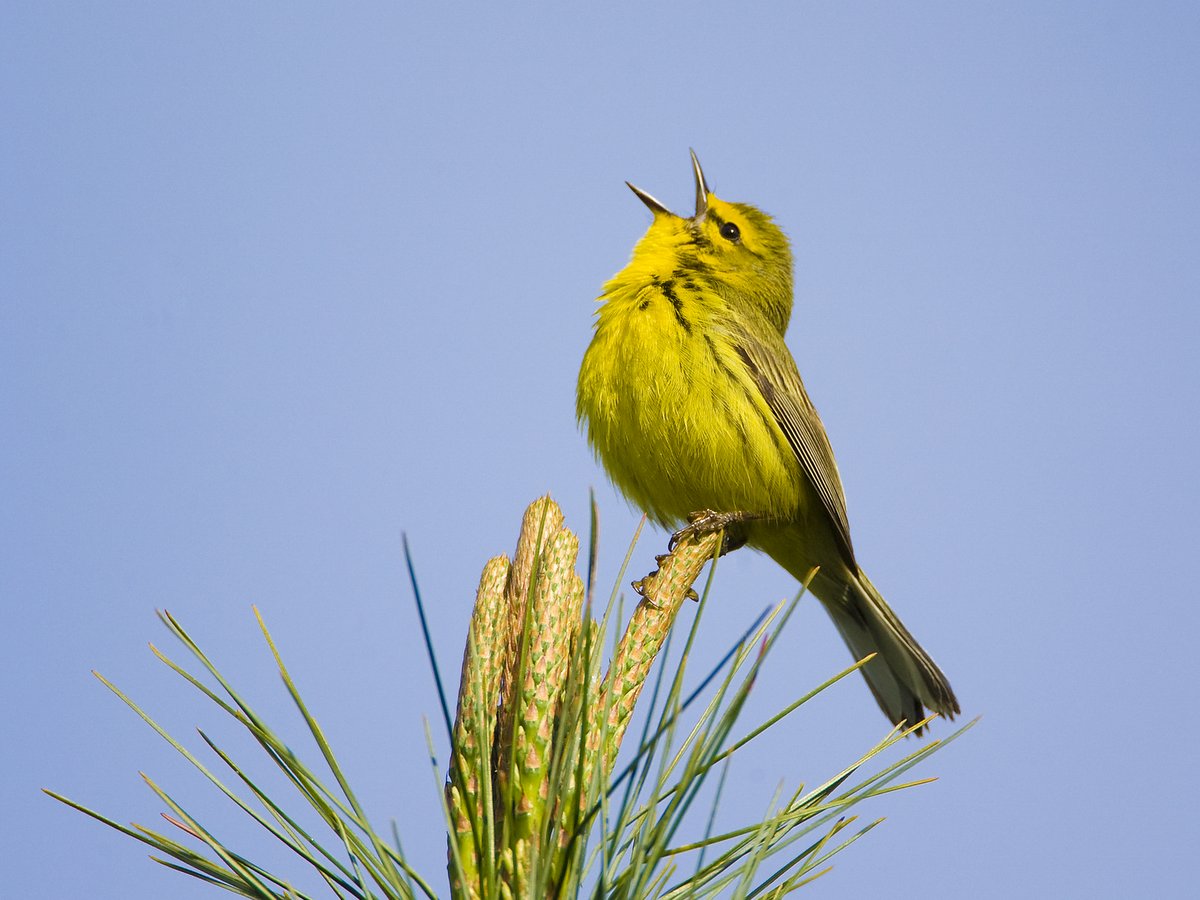All around us, birds are heralding the arrival of spring. From tanagers and vireos resounding through the deciduous canopy, to warblers buzzing and trilling from the sunny edges, to Winter Wrens and waterthrushes pealing out their presence in our gorges, and more – in every habitat in our Finger Lakes, the few weeks from May into mid-June offer a dazzling soundscape of the year’s most diverse and ardent bird songs.
But what does it all mean? Why do birds sing? How? And how can we figure out who exactly is singing what?
Bird vocalizations fall into two categories – songs and calls. In general, we define bird song as a structured, usually complex vocalization serving either or both of two purposes – to defend territories and to attract mates. Most bird song is by males, though females do also sing territorially or for pair bonding, especially in the tropics. Bird calls are usually shorter and structurally simpler, serving a wider range of functions, including courtship, signaling alarm, or communicating a change in location.

Photo: Marie Read
We can therefore surmise that a Scarlet Tanager singing strings of burry phrases for minutes on end from the same perch is saying, “Here I am…I’m a male Scarlet Tanager, and this is my territory…Females, come check me out…Other male tanagers, stay away!” But this same tanager or his mate might call out “chick-brrr!” to say simply, “I’m over here!” or a nasal whistle to announce the delivery of food to nestlings.
Almost no songbirds know their songs by instinct. Rather, most need to learn to sing. Songbirds begin learning songs as nestlings by hearing the songs of adults nearby. In this way, song traditions (known to biologists as “memes”) are passed down in songbird neighborhoods from year to year. Many songbird species have area-specific dialects.
Birds sing using a specialized organ called the syrinx. The syrinx is similar to our larynx, but whereas the larynx consists of one air passage, the syrinx branches into two tubes like an upside-down Y. Air flowing over vibrating membranes and cartilage near the intersection of these tubes generates sounds. Birds can modulate the air flow separately in each half of the syrinx. Thus they can make two sounds at once – and some, such as the Wood Thrush, can even sing rising and falling notes at the same time. They can also switch from one branch to the other without pausing to breathe.
The songs of individual bird species are usually highly distinctive, especially to the ears of the birds themselves. This makes sense, as songs are usually directed at members of the same species. But one notable exception is with Philadelphia and Red-eyed Vireos. They sing songs so similar to each other that even Red-eyed Vireos themselves cannot tell who’s singing, though Philadelphia Vireos can. As a result, Philadelphia Vireos can keep Red-eyed Vireos as well as other Philadelphia Vireos out of their foraging territories.
We humans can also learn to distinguish bird songs and thereby identify the singers to species, but it can take some work. One simple way is just to listen as much as possible, ideally seeing and visually identifying a bird as it sings. Describing a bird song in words to oneself can help. So too can starting with a very familiar bird song and then using it as a point of reference for others that are slightly different.
“That song reminds me of the TYU TYU tyu tyu tyu tyu tyu that Northern Cardinals sing outside my window at home. But this song is higher-pitched and has a jumble after the TYU TYU…aha, I see it in the ravine – a Louisiana Waterthrush!”
And now there are amazing technology-driven shortcuts to bird song ID. One powerful yet highly accessible option for birders is Merlin, an app developed by the Cornell Lab of Ornithology. The Sound ID feature of Merlin allows users to record songs on mobile phones and get real-time suggestions of the most likely species. Merlin deduces singers’ identities by comparing pitch and pattern with songs in the vast media archive of the Lab’s Macaulay Library, and also by taking eBird distribution data into account. The app also lets users conveniently read up on species and listen to songs for comparison.
As the drama of early-season courtship and territory defense turns to parental care and preparation for migration, the avian songscape will gradually subside. By fall, only the chips and chatter of year-round resident bird calls will remain. So now is the time to get out, tune in, and enjoy the spring concert while it lasts!

